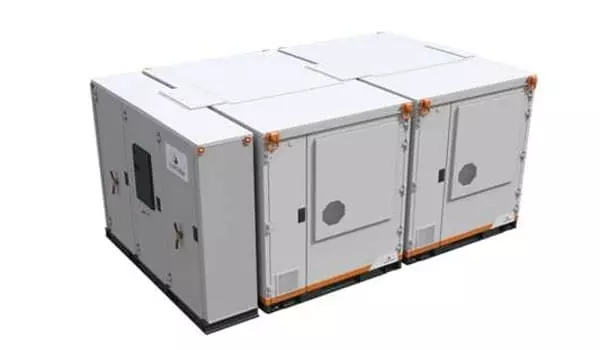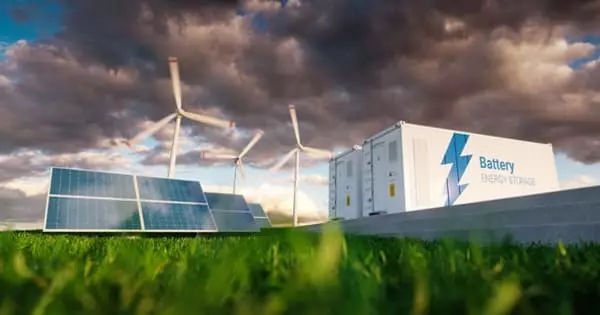Engineers and policymakers are increasingly turning their attention to energy storage solutions in response to growing concerns about the environmental impacts of fossil fuels as well as the capacity and resilience of energy grids around the world. Indeed, energy storage can help address the intermittent nature of solar and wind power; in many cases, it can also respond quickly to large fluctuations in demand, making the grid more responsive and reducing the need to build back up power plants. The effectiveness of an energy storage facility is determined by how quickly it can respond to changes in demand, the rate of energy lost during the storage process, the overall energy storage capacity, and the speed with which it can be recharged.
Electric vehicles require power to be available anywhere and at any time to recharge, but solar and wind are intermittent energy sources that do not provide on-demand power. And the electricity they produce must be stored for later use rather than being wasted. New research reveals a more stable method of storing this vital energy.
Electric vehicle (EV) sales have increased exponentially in recent years, as has the demand for renewable energy sources to power them, such as solar and wind. According to the International Energy Agency, there will be nearly 1.8 million registered electric vehicles in the United States by 2020, which is more than three times the number in 2016.
The development of high-performance RFBs will enrich the category of electrical energy storage systems and supplement the shortfall of intermittent renewable energy sources, thereby greatly improving the usability of electricity-powered facilities such as vehicles.
Dr. Yu Zhu
Electric vehicles require power to be available anywhere and at any time to recharge, but solar and wind are intermittent energy sources that do not provide on-demand power. And the electricity they produce must be stored for later use rather than being wasted. Dr. Yu Zhu, a professor in The University of Akron’s School of Polymer Science and Polymer Engineering, and his research team come in to help by developing a more stable way to store this important energy.
Electricity power stations, like gas stations today, require a storage system to keep the electricity for EV charging constantly charged. Low-cost, scalable redox flow batteries (RFB) are among the best technologies for such a system; however, current RFBs use expensive and environmentally hazardous active materials (electrolytes). Water-soluble organic materials have recently been proposed as future electrolytes in RFBs (namely aqueous organic RFBs, or AORFBs). Organic-based electrolytes can be derived from renewable sources and produced at a low cost. However, a major barrier to AORFBs is the lack of stable water-soluble organic electrolyte materials, particularly the positive electrolyte (catholyte).

In collaboration with scientists at Pacific Northwestern National Laboratory led by Dr. Wei Wang, Zhu’s research group successfully developed the most stable catholyte (positive electrolyte) in AORFBs to date and demonstrated cells that retained more than 90% of capacity over 6,000 cycles, implying more than 16 years of uninterrupted service at a rate of one cycle per day. Their findings were recently published in Nature Energy, and they were assisted by Zhu’s doctoral students Xiang Li and Yun-Yu Lai.
“The development of high-performance RFBs will enrich the category of electrical energy storage systems and supplement the shortfall of intermittent renewable energy sources, thereby greatly improving the usability of electricity-powered facilities such as vehicles,” Zhu says. “The development of new catholyte is critical to significantly improving the performance of aqueous organic RFBs.”
The team not only demonstrated a state-of-the-art catholyte in AORFBs in the Nature Energy paper but also provided a brand-new strategy for designing water-soluble catholyte to improve their solubility (energy density) in water. Instead of attaching a hydrophilic functional group to improve molecule solubility, the researchers change the symmetry of the molecules, resulting in a dramatic increase in solubility. The team intends to design new materials with the new design strategy in order to further mature the RFBs.
Based on the technology developed in this study, a patent application has been filed. The materials’ scalability will be investigated further at Akron PolyEnergy Inc., a UA spin-off company co-founded by Zhu that focuses on the development of materials in energy storage devices such as lithium-ion batteries and flow batteries.
In the cleantech hype cycle, long-duration storage has an enviable position. Its allure has proven to be more enduring than that of energy blockchain, and its commercialization is further along than that of super-fluffy green hydrogen. Depending on who you ask, long-duration storage technology has the potential to demolish coal and gas peaker plants, transform renewables into 24/7 resources, and pave the way for a carbon-free grid.















